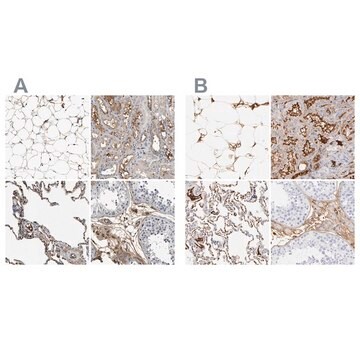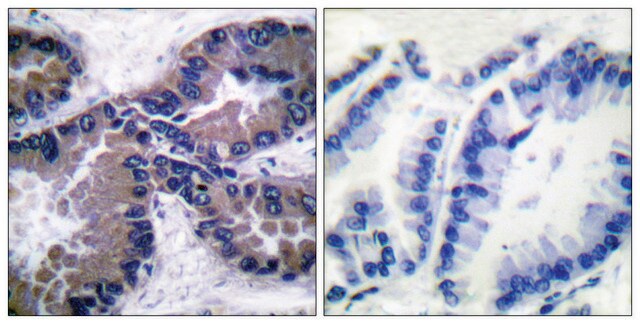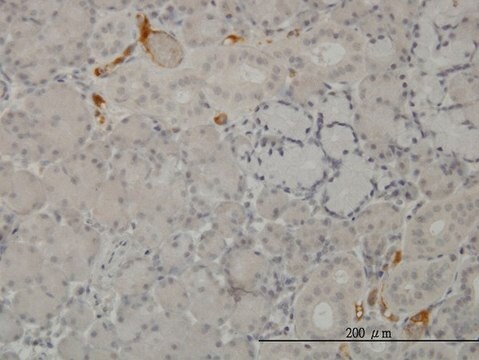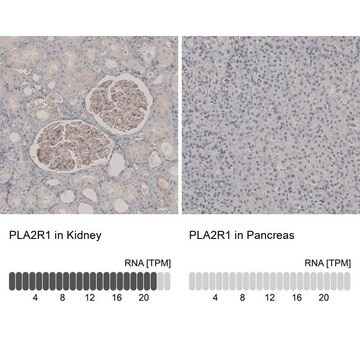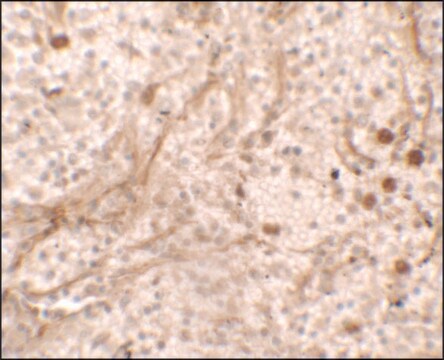詳細
We are committed to bringing you greener alternative products, which adhere to one or more of The 12 Principles of Green Chemistry. This antibody is Preservative-free, produced without the harm or sacrifice of animals and exceptionally stable to allow for ambient shipping and storage if needed and thus aligns with "Waste Prevention", "Designing Safer Chemicals" and "Design for Energy Efficiency".
Click here for more information.
ZooMAb® antibodies represent an entirely new generation of recombinant monoclonal antibodies. Each ZooMAb® antibody is manufactured using our proprietary recombinant expression system, purified to homogeneity, and precisely dispensed to produce robust and highly reproducible lot-to-lot consistency. Only top-performing clones are released for use by researchers. Each antibody is validated for high specificity and affinity across multiple applications, including its most commonly used application. ZooMAb® antibodies are reliably available and ready to ship when you need them.
特異性
Clone 1D19 is a ZooMAb® rabbit recombinant monoclonal antibody that specifically detects Complement C3. It targets an epitope within 19 amino acids from the C-terminal half.
免疫原
KLH-conjugated linear peptide corresponding to 19 amino acids from the C-terminal half of human Complement 3.
アプリケーション
Quality Control Testing
Evaluated by Western Blotting in HepG2 cell lysate.
Western Blotting Analysis: A 1:1,000 dilution of this antibody detected Complement C3 in HepG2 cell lysate.
Tested Applications
Western Blotting Analysis: A 1:1,000 dilution from a representative lot detected Complement C3 in Human kidney tissue lysate.
Immunohistochemistry (Paraffin) Analysis: A 1:1,000 dilution from a representative lot detected Complement C3 in Human kidney tissue sections.
Immunocytochemistry Analysis: A 1:100 dilution from a representative lot detected Complement C3 in HepG2 cells.
Affinity Binding Assay:: A representative lot of this antibody bound Complement C3 peptide with a KD of 5.2 x 10-9 in an affinity binding assay.
Note: Actual optimal working dilutions must be determined by end user as specimens, and experimental conditions may vary with the end user.
ターゲットの説明
Complement C3 (UniProt: P01024; also known as C3, PZP-like alpha-2-macroglobulin domain-containing protein 1) is encoded by the C3 (also known as CPAMD1) gene (Gene ID: 718) in human. C3 is a secreted protein that plays a key role in the activation of the complement system. It s processing by C3 convertase is the central reaction in both classical and alternative complement pathways. C3 has an anaphylatoxin-like domain (aa 693-728) and a NTR (Netrin) domain (aa 1518-1661). IC3 precursor is first processed by the removal of four arginine residues, forming two chains, β and , linked by a disulfide bond. C3 convertase between residues 748 and 749 activates C3 by cleaving the chain, releasing C3a anaphylatoxin and generating C3b. C3a appears to be important in many inflammatory responses. The active C3b fragment covalently binds to the cell or bacterial surface carbohydrates or immune aggregates, via its reactive thioester, and plays a role in opsonization. Surface-associated C3b generated in the classical pathway can also feed into the alternative pathway because it has the affinity for binding with the Factor B to form a pro-convertase C3bB. C3a anaphylatoxin is a mediator of local inflammatory process. In chronic inflammation, it acts as a chemoattractant for neutrophils. Defects in C3 gene can cause complement component 3 deficiency that leads to recurrent, severe, pyogenic infections because of ineffective opsonization of pathogens. Some defects are also known to cause age-related macular degeneration and hemolytic uremic syndrome that can lead to hemolytic anemia and renal failure. This ZooMAb® recombinant monoclonal antibody, generated by our propriety technology, offers significantly enhanced specificity, affinity, reproducibility, and stability over conventional monoclonals. (Ref.: Sharma, S., et al. (2020). Front. Immunol. 11; 462; Whipple, EC., et al. (2007). Mol. Immunol 44(4); 377-388).
物理的形状
Purified recombinant rabbit monoclonal antibody IgG, lyophilized in PBS with 5% Trehalose, normal appearance a coarse or translucent resin. The PBS/trehalose components in the ZooMAb formulation can have the appearance of a semi-solid (bead like gel) after lyophilization. This is a normal phenomenon. Please follow the recommended reconstitution procedure in the data sheet to dissolve the semi-solid, bead-like, gel-appearing material. The resulting antibody solution is completely stable and functional as proven by full functional testing. Contains no biocide or preservatives, such as azide, or any animal by-products. Larger pack sizes provided as multiples of 25 µL.
再構成
300 µg/mL after reconstitution at 25 µL per vial. Please refer to guidance on suggested starting dilutions and/or titers per application and sample type.
保管および安定性
Recommend storage of lyophilized product at 2-8°C; Before reconstitution, micro-centrifuge vials briefly to spin down material to bottom of the vial; Reconstitute each vial by adding 25 µL of filtered lab grade water or PBS; Reconstituted antibodies can be stored at 2-8°C, or -20°C for long term storage. Avoid repeated freeze-thaws.
法的情報
ZooMAb is a registered trademark of Merck KGaA, Darmstadt, Germany
免責事項
Unless otherwise stated in our catalog or other company documentation accompanying the product(s), our products are intended for research use only and are not to be used for any other purpose, which includes but is not limited to, unauthorized commercial uses, in vitro diagnostic uses, ex vivo or in vivo therapeutic uses or any type of consumption or application to humans or animals.



